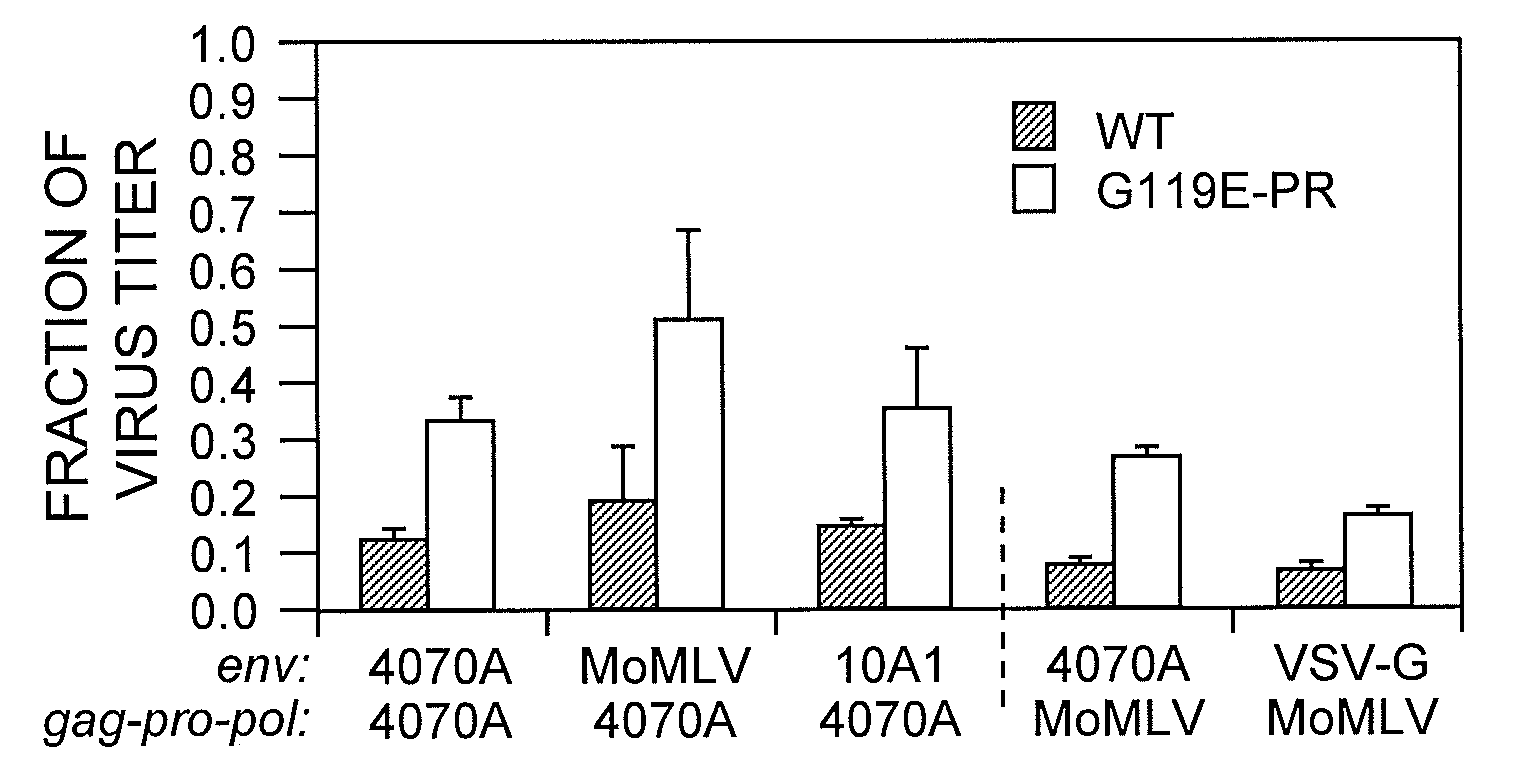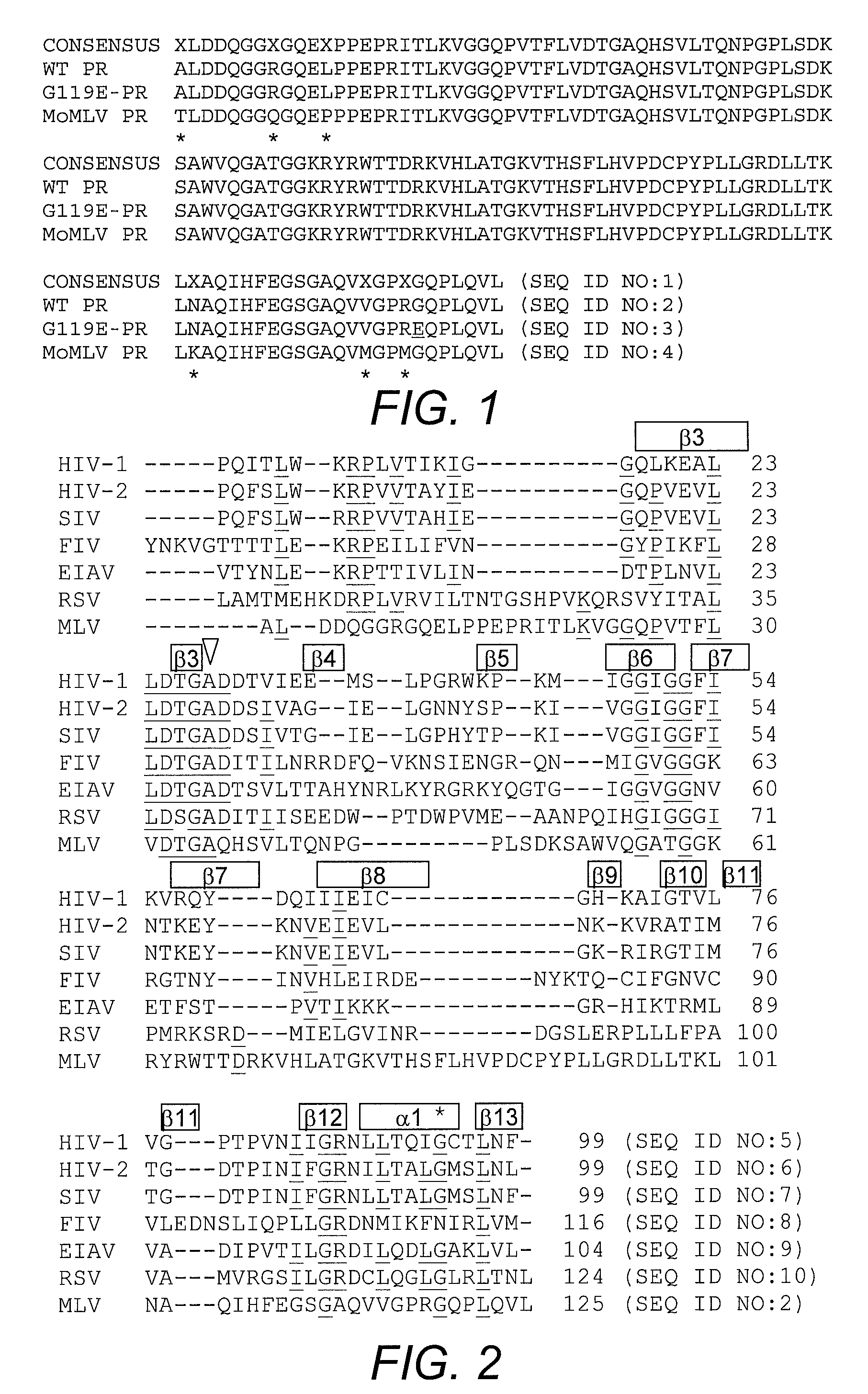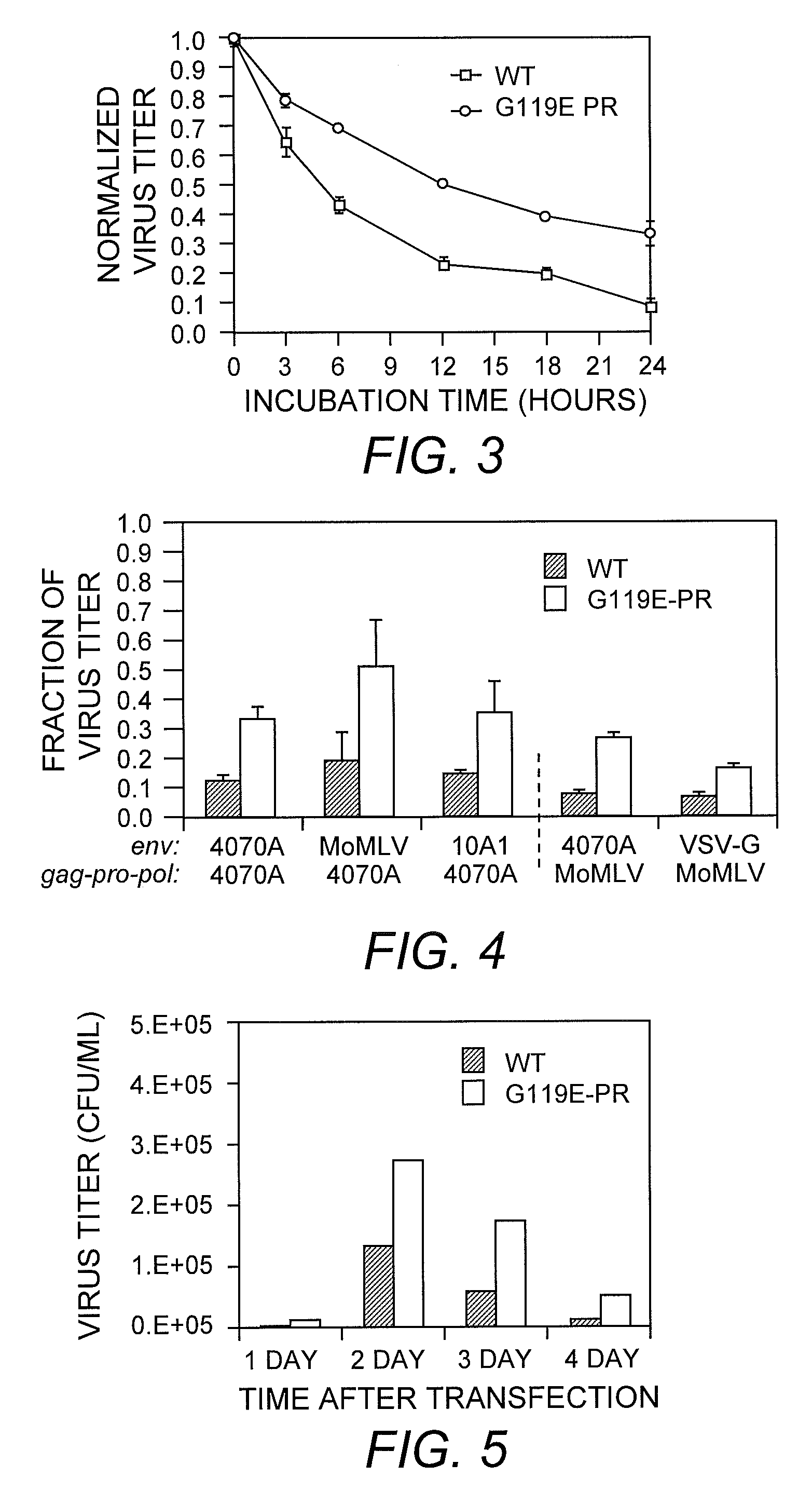Stable retrovirus and methods of use
a retrovirus and stable technology, applied in the field of stable retrovirus, can solve the problems of limiting both the production and the maximum achievable viral titer, increasing costs, and limiting gene transfer efficiency, so as to increase the viral production, and increase the viral production and infection efficiency. the effect of the titer and infection efficiency of the retrovirus
- Summary
- Abstract
- Description
- Claims
- Application Information
AI Technical Summary
Benefits of technology
Problems solved by technology
Method used
Image
Examples
example 1
Materials and Methods
[0043]Cell lines. HEK-293, HEK-293T, and NIH 3T3 cells were obtained from American Type Culture Collection (ATCC, Manassas, Va.). GP-293 Luc packaging cells stably express the Moloney murine leukemia virus (MoMLV) gag-pol gene products as well as a luciferase-encoding viral RNA transcript (BD BIOSCIENCES CLONTECH™, Mountain View, Calif.). All cell lines were maintained in Dulbecco's modified Eagle's medium (DMEM) with 10% fetal bovine serum (FBS), except NIH 3T3, which were grown in DMEM with 10% calf serum.
[0044]Plasmids. pA14 encodes an infectious amphotropic clone of MLV, containing the MLV genome in a permutated form at the SalI site in the pol gene. pMD.M EcoEnv expresses the ecotropic MoMLV envelope protein driven by a CMV promoter. The ecotropic envelope sequence of pMD.M EcoEnv was replaced, between sites SacII and ClaI, by the 4070A env gene from pMo(4070A)(Han, et al. (1998) J. Virol. 72:9101-9108) to produce pMD.M(4070A). The 10A1 env of pMo(10A1)(Han...
example 2
Selection of MLV Mutants with Improved Stability
[0056]Amphotropic MLV was mutated by passaging pA14, encoding the MLV genome, in a bacterial mutator strain, XL1-Red (Low, et al. (1996) J. Mol. Biol. 260:359-368). The theoretical library size, determined by the population of XL1-Red cells in culture, was greater than 1011 clones when counted by limiting dilution, but the experimental virus library size was limited by number of producer cells transfected. With transfection efficiencies of 50-80% for HEK-293 cells and 3×106 cells at transfection, the effective size of the library was >106 variant viruses. Viruses produced from the mutated pA14 library exhibited ˜50% of the titer of viruses produced using the wild-type vector.
[0057]The strategy for selection of more stable viruses was as follows. Viruses were generated by lipofection of the mutated pA14 library into HEK-293 cells. Because many plasmids can enter a given cell during transfection, each cell can produce multiple virus vari...
example 3
Isolation and Characterization of Mutant MLV
[0060]To determine if the variant virus population remaining after selection was a heterogeneous mixture of viruses with improvements of varying degrees or a relatively homogeneous population of similarly improved variants, individual clones were isolated from the selected variant population. Mutations in the env coding region were expected, in particular mutations modifying the SU-TM interaction, as observed instability of MLV is attributed to a labile SU-TM interaction. Therefore, the initial search for mutations was limited to the Env protein sequence. Fifty-three env clones were isolated and tested for retention of infectivity after 24-hour incubation at 37° C. None of the env clones appeared to exhibit the improved stability present in the mutant population. Accordingly, the functional mutation(s) appeared to occur elsewhere in the MLV genome outside env. Because the mutator strain employed did not localize mutations to the envelope r...
PUM
| Property | Measurement | Unit |
|---|---|---|
| concentration | aaaaa | aaaaa |
| stability | aaaaa | aaaaa |
| structures | aaaaa | aaaaa |
Abstract
Description
Claims
Application Information
 Login to View More
Login to View More - R&D
- Intellectual Property
- Life Sciences
- Materials
- Tech Scout
- Unparalleled Data Quality
- Higher Quality Content
- 60% Fewer Hallucinations
Browse by: Latest US Patents, China's latest patents, Technical Efficacy Thesaurus, Application Domain, Technology Topic, Popular Technical Reports.
© 2025 PatSnap. All rights reserved.Legal|Privacy policy|Modern Slavery Act Transparency Statement|Sitemap|About US| Contact US: help@patsnap.com



